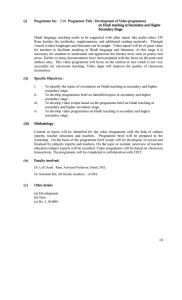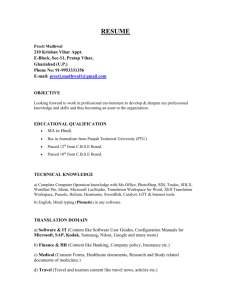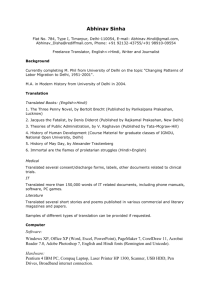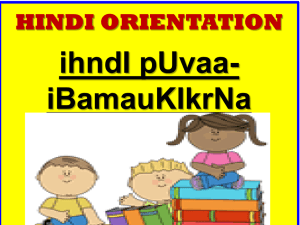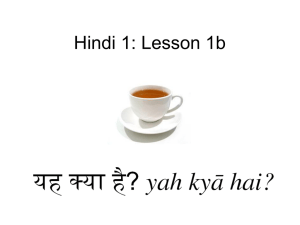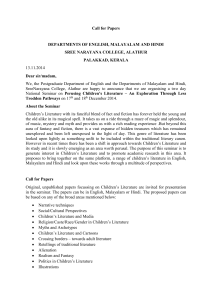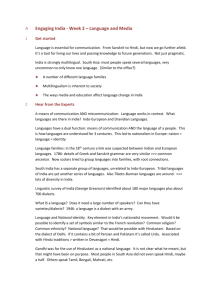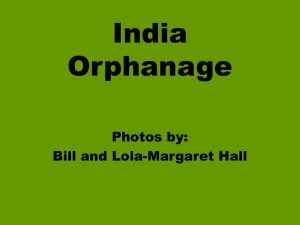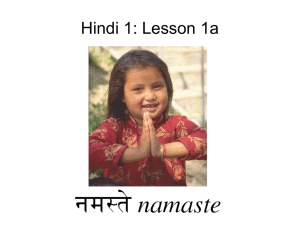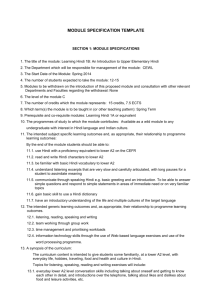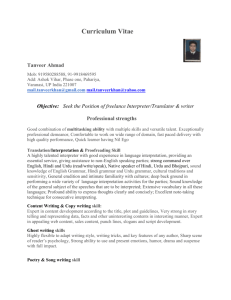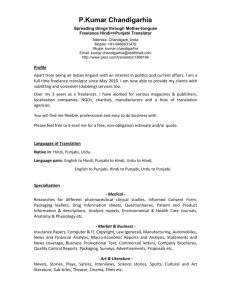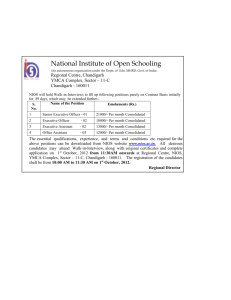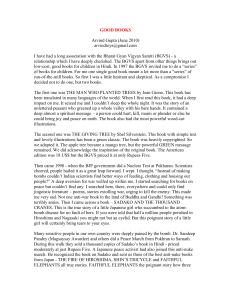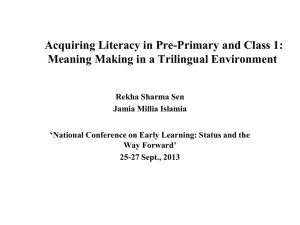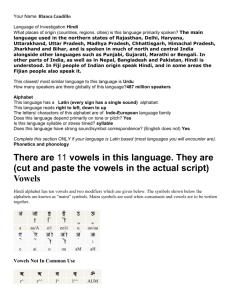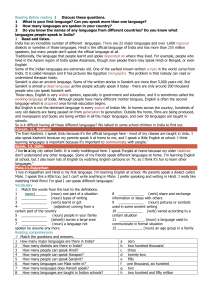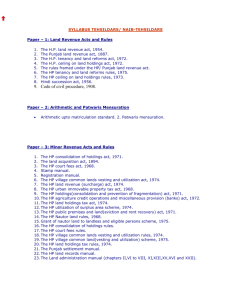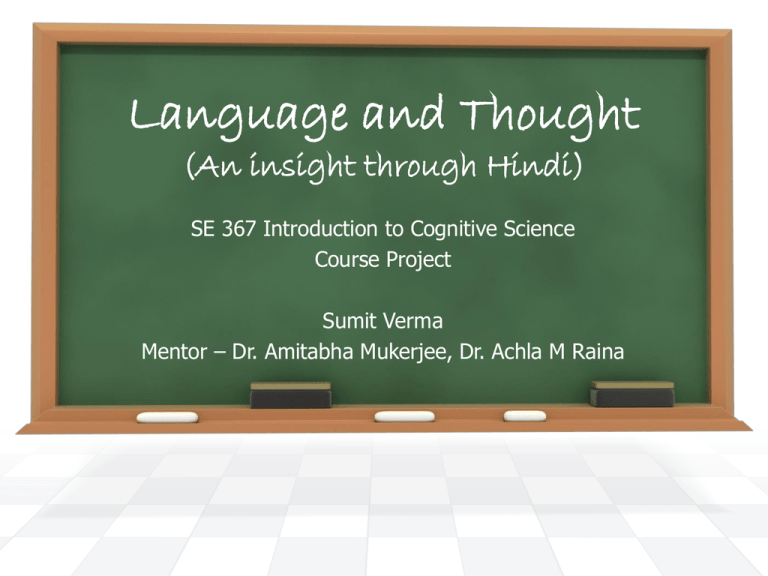
Language and Thought
(An insight through Hindi)
SE 367 Introduction to Cognitive Science
Course Project
Sumit Verma
Mentor – Dr. Amitabha Mukerjee, Dr. Achla M Raina
The Basics
Whorfianism
Differences can be due to :
Semantic/Structure
View of the abstract world
Part A – Structure of a Language
Background
Hindi (SOV) v/s English (SVO)
Experiment
Procedure
Participants
8 Mess/Hall Workers (Hindi
Speakers) and 21 X 2 Amazon
Mechanical Turk HIT’s (English
Speakers)
Results
American English Speakers
Indian Hindi Speakers
Part B – Grammatical Gender in Language
Background (Bihari Hindi v/s Standard UP/MP Hindi)
Bihari Hindi – Inanimate objects treated as
Masculine
Standard Hindi – Gender of the object depends on
a set of rules
Examples:- Baarish ho rha hai and Baarish ho rhi hai
Experiment
Procedure
Participants – 10 1st Year IITK students from Bihar +
10 IITK students from UP/MP/Delhi
बारिश
चाबी
Results
Bihari Hindi Speakers
Standard Hindi Speakers (UP/MP)
References
http://edge.org/3rd_culture/boroditsky09/boroditsky09_index.html
Linguistic Relativity – Lera Boroditsky (Galley – Article 00567)
The Linguistic Survey of India, vol. v. part ii. (1903)
Boroditsky, L., Schmidt, L., & Phillips, W. (2003). Sex, Syntax, and
Semantics. In Gentner & Goldin-Meadow (Eds.,) Language in Mind:
Advances in the study of Language and Cognition.
Semantic structure in improvised communication, (CogSci2011)
Marieke Schouwstra, et. al (Anouschka van Leeuwen, Nicky Marien,
Marianne Smit, Henri�ette de Swart)
•
Thank You!!!!

